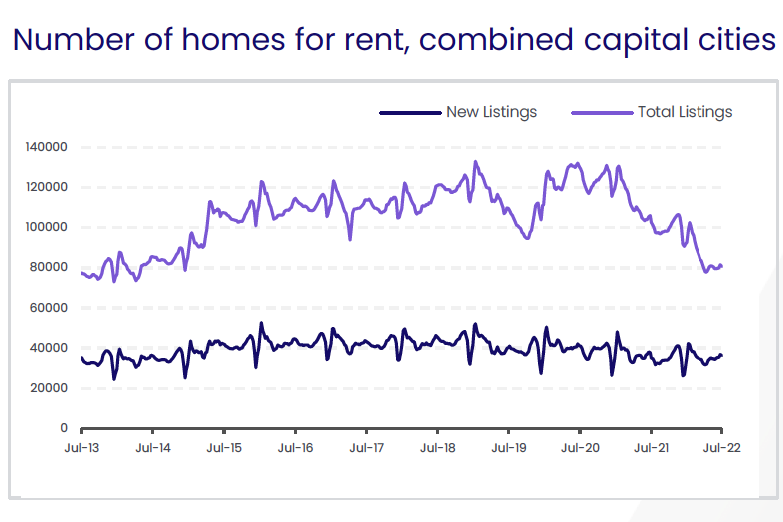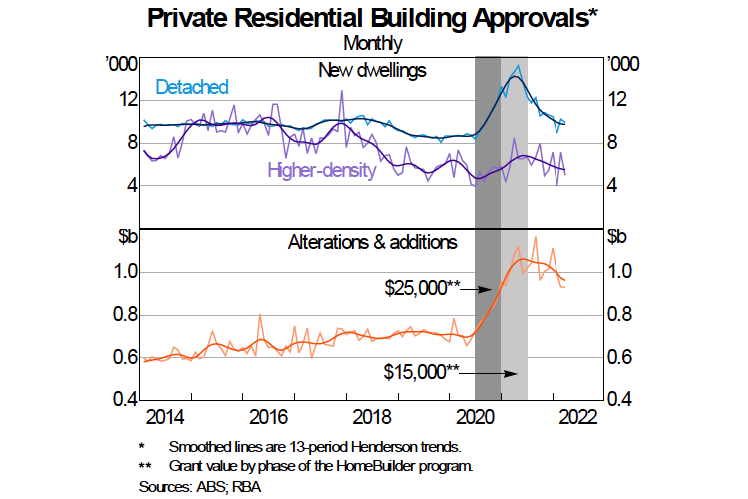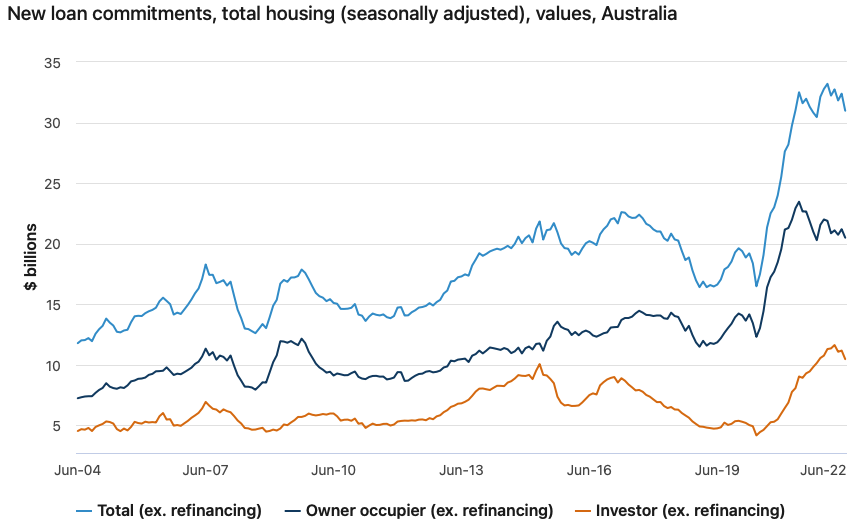- Bad news flooding the airwaves is overlooking the good numbers on investor demand
- Mid-tier developers have the best window of opportunity, but it is closing
- Professional, investor-lead design will be crucial to success
At present, property market commentators are trying to outdo each other in delivering bad news. I admit, there are real challenges faced by people and businesses, but the analysis feels unbalanced.
Unfortunately, precious few column inches in some publications are focussed on diving into relevant data and describing, without emotion or agenda, what the current economic challenges mean for property investment in this nation.
I aim to remedy that.
You see, rather than running scared, I firmly believe 2022 will continue to be a prime opportunity for anyone looking to invest in residential property.
As such, property developers who design projects that fit the investor market will do well. It will be crucial, however, to consult with strata advisors in the earliest stages of your strata/body corporate/owners corporation project. In this way you can ensure you project’s design not only suits the end user, but also keeps ongoing maintenance to a minimum.
Vacancies and rent demand
The value of rental property directly correlates with rental demand, and as has been well documented, tenants are desperate for shelter.
Vacancy rates are incredibly tight. A balanced rental market is one that hovers around three per cent vacancy.
Looking at the stats from SQM Research for July 2022 and sub-two per cent vacancies are entrenched across all capital cities. Sydney is 1.5 per cent. Melbourne at 1.6 per cent, while all others are astonishingly at 0.7 per cent or lower.
This has already resulted in rising rents. CoreLogic numbers show the national rental rate for the year to July 2022 rose 9.8 per cent. Astonishingly, Adelaide and Brisbane rose 11.3 per cent and 12.7 per cent respectively over the period.
Also, units are leading the charge back. Challenging rental affordability in detached housing is compelling many renters to choose units as a reasonable alternative. Simply put, if you want to live in a particular location and you’re on a budget, attached housing will be your only choice.
CoreLogic figures to April 2022 on rolling average rent also reveal a closing differential gap between house and unit rent levels.

Investors will be compelled by this rising tide to get more active in markets, and well-designed unit stock that appeals to the right tenant base will enjoy huge demand from this cohort.
Rental supply
There simply isn’t enough rental stock available to cope with tenant demand. CoreLogic results to 14th August show that rental listings are down 21.1 per cent across the combined capital cities. This is a continuation of the trend that set in at the start of 2021.

A big factor here is that investors retreated from the market throughout the pandemic. A heap of rental property has left the market and we’re now struggling to backfill. The fundamental of limited supply is in play and projects geared toward filling this investor gap are sure to benefit.
Prices and yields
Rising property prices had been a major focus up until the start of this year. Median house values across all capitals rose dramatically to reach record levels.
Since this time prices have attenuated but remain elevated in centres outside of Sydney and Melbourne. CoreLogic numbers to August 2022 show dwelling values in Australia are 8.0 per cent higher than at the same time last year. Some centres are performing extremely well with Adelaide up 24.1 per cent for the year, and Brisbane up 22.1 per cent.
This would normally result in softening gross rental yields, but rising rents have offset the yield slowdown.
Australian gross rental yields rose 3.41 per cent through July. Of note, since the end of 2021, gross rent yields in Sydney have risen 34 basis points, and 23 basis points in Melbourne according to CoreLogic.
Another factor here is that detached houses have become less affordable, so a proportion of the population has had to turn to renting as a stop gap. It is taking more time for young buyers to save the deposit for their first home, for example. The outcome is that they are having to rent for longer, which is yet another boost for landlord prospects and, in turn, developers producing the right type of unit product.
Unit supply
Some developers are already making moves to bring stock to market. The number of units under construction across all states has risen, but we aren’t anywhere near the heady days of booming supply in 2016. The challenge will be bringing these projects to market more quickly.
Those completing mid-tier projects will be at the advantage as their development horizon is shorter than for larger project developers.
Building approvals support my position, too. Data presented by the Reserve Bank of Australia shows building approvals for high-density housing have been trending downward since mid 2021.
So, while the construction pipeline is ticking up slightly, the forward projection of stock is still low. Those developers who get projects up and running now are going to be way ahead of the curve.

Opening borders
The reopening of borders, both domestically and internationally, bodes well for investment property values over the next two years.
Residents who can still work remotely are considering their options when it comes to where they live, with markets such as Southeast Queensland enjoying historically high interstate migration numbers. New residents coming to any centre will boost demand for rentals, as most don’t look to immediately buy a property in their centre of choice.
But the real driver will be our full reopening to the world as we welcome back students, travellers, workers and all sorts of new Aussies to our shores. Immigration is fuel to the rental demand fire across capitals and regionals.
Getting ahead of the market
The pandemic may have slowed investor activity, but many are obviously getting busy again.
ABS data showed to June 2022 lending for investor housing fell 6.3 per cent to $10.5 billion. In addition, lending to investors remains proportionally low compared to owner occupiers for now. That said, investor lending is firming on an annual basis. CoreLogic analysis reveals the proportion of total lending going to investors has risen dramatically since June 2020.
This is good news for any developer bringing stock to market in the next 12 to 24 months. They will be among the first to benefit from any uptick in demand provided they have designed their unit project to meet the needs of tenants and owners. The best way to achieve this outcome is to consult with specialists in unit project design.

It’s the time of the investor
A look across all this data reveals telling statistics if you’re developing in the investment property sector.
It says that investors are becoming more active in the market, but competition is not running hot just yet. Despite this renewed interest, there’s a lack of stock available to purchase, and a low-supply pipeline ahead.
All this is occurring at a time when tenants are crying out for rental properties. There remains a woeful under-availability of rental stock that’s already manifested in rising rents – something which is not going to slow anytime soon. Into this mix we’ll be throwing open Australia’s borders, which will boost our tenant population (i.e. demand) even more.
Right now, savvy developers are in a prime position. Bad news flooding the airwaves is overlooking the good numbers we’ve unearthed… but the perceived downturn won’t last long.
As more demand comes to the market, expect prices to rise and boost margins. Those who act now stand to profit the most. It will be crucial, however, to ensure your design and compliance are spot-on in the early planning stages of your project and ensure your maintenance costs fit with the investor market.
This is best provided by experienced consultants with comprehensive local knowledge. Not only does this mitigate risks, but also makes certain your project appeals to the ideal buyer and tenant.








